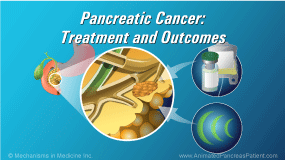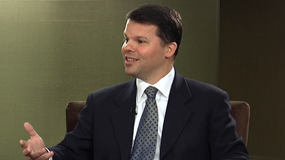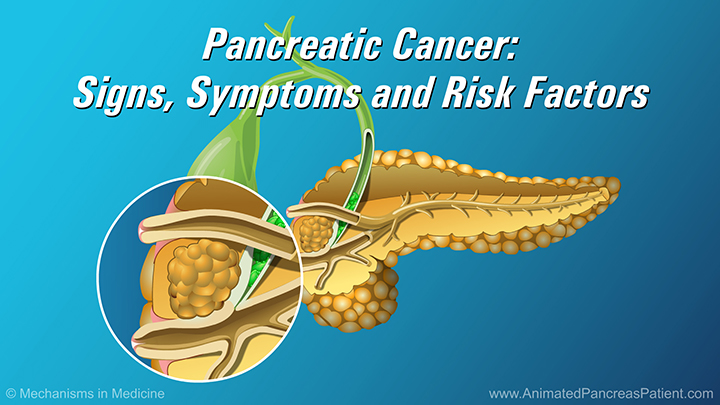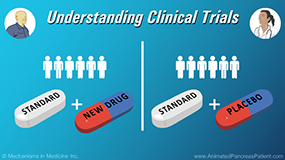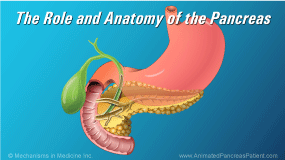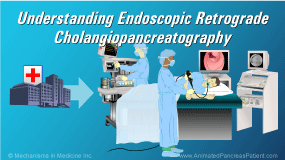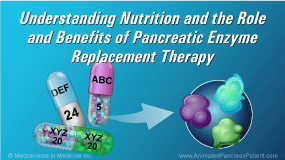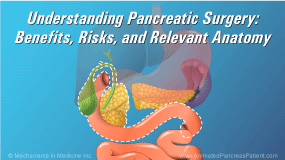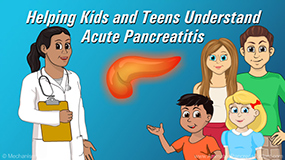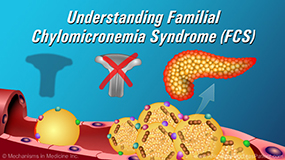Pancreatic Cancer - Treatment and Outcomes
*Please note: This slide set represents a visual interpretation and is not intended to provide, nor substitute as, medical and/or clinical advice.
Pancreatic cancer affects the pancreas, a digestive-system organ located in the upper abdomen.
The pancreas is a digestive system organ that has two important functions. It produces hormones to regulate blood sugar, and enzymes to break down food.
Treatment of pancreatic cancer is divided into two approaches: curative and non-curative (palliative).
Curative treatment is possible for localized tumors which are amenable to surgical removal.
Most pancreatic cancers are in the head of the pancreas.
Tumors in the head of the pancreas are removed using a surgery known as the Whipple procedure. In this surgery, the head of the pancreas, the distal bile duct, and some of the small intestine are removed. It also involves some reconstructive surgery.
Tumors in the head of the pancreas are removed using a surgery known as the Whipple procedure. In this surgery, the head of the pancreas, the distal bile duct, and some of the small intestine are removed. It also involves some reconstructive surgery.
A Whipple procedure is a major surgery that takes 3-5 hours and will require a 7-10 day hospital stay. It should be performed by specialized surgeons.
If the tumor is in the body or tail of the pancreas, a distal pancreatectomy surgery is performed to remove these parts of the pancreas as well as the spleen, and sometimes part of the stomach.
Very rarely, in the case of large or multiple tumors, the entire pancreas is removed together with the gallbladder, part of the bile duct, the duodenum, and part of the stomach and spleen.
Very rarely, in the case of large or multiple tumors, the entire pancreas is removed together with the gallbladder, part of the bile duct, the duodenum, and part of the stomach and spleen.
Following surgery, chemotherapy is given to help destroy any remaining cancer cells in the body. Radiation treatment may also be used to target remaining cancer cells in the pancreas.
Recovery after surgery can be slow.
Following a Whipple procedure, the stomach empties more slowly which can result in nausea, vomiting, feeling full quickly and poor nutrition. However this improves over time.
As well, infections and leakage of pancreatic juices are common during the healing process.
Weight loss over the first 3-4 weeks following surgery is typical.
If the tumor is not operable, then treatment is non-curative or palliative in intent.
Rather than attempting to cure the disease, the goal of treatment is control of disease, extension of life, symptom relief and maintaining quality of life.
Chemotherapy and radiation may be used to slow progression of the cancer.
And medication to manage pain is common.
Long-term outcomes following curative treatment vary immensely. Even after successful surgery, chemotherapy and radiation, pancreatic cancer returns in most cases.
Between 15 to 40% of people who undergo surgery live for five years or more. However on average, the cancer returns in about a year, and survival is between one to two years post-treatment.
Nutrition is important in both curative and palliative treatment plans.
Decreased appetite and feeling full early are common. As well, the pancreas loses its ability to work well. This may affect how nutrients are absorbed from food and its ability to regulate blood sugar.
To help maintain weight and nutrition, the treatment plan may include pancreatic enzyme replacement therapy (PERT), nutritional supplements and appetite stimulants. Dietary changes to reduce the amount of fat in the diet may also be recommended, as well as increased frequency of small meals or snacks.
This slide show focuses on two approaches in the treatment of pancreatic cancer: curative and non-curative (palliative), as well as its long-term outcomes.
-
Share with family and friends:
Click here to take our SURVEY
Your feedback is important to us! We will use your feedback to develop future areas of content about pancreatic diseases which will help other patients, caregivers and families.
